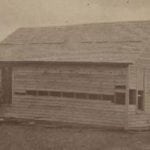 History
History  History
History  Weird Stuff
Weird Stuff 10 Superstitious Beliefs That Once Consumed Entire Cultures
 History
History 10 Bizarre Friendly Fire Incidents in Military History
 Technology
Technology 10 Modern Technologies That Accidentally Imitate Ancient Magic
 Mysteries
Mysteries 10 Mysteries of the Human Genome
 Weird Stuff
Weird Stuff 10 Things So Rare They’ve Only Been Found Once
 History
History 10 Legends Whose Last Moments Undid Their Glory
 Health
Health 10 Futuristic Ideas to Treat Common Medical Problems
 Weird Stuff
Weird Stuff Ten Surreal Attempts to Reverse Baldness
 Facts
Facts 10 U.S. Government Contingency Plans for the Unthinkable
 History
History 10 Odd Things Colonial Americans Kept at Home
 Weird Stuff
Weird Stuff 10 Superstitious Beliefs That Once Consumed Entire Cultures
 History
History 10 Bizarre Friendly Fire Incidents in Military History
Who's Behind Listverse?

Jamie Frater
Head Editor
Jamie founded Listverse due to an insatiable desire to share fascinating, obscure, and bizarre facts. He has been a guest speaker on numerous national radio and television stations and is a five time published author.
More About Us Technology
Technology 10 Modern Technologies That Accidentally Imitate Ancient Magic
 Mysteries
Mysteries 10 Mysteries of the Human Genome
 Weird Stuff
Weird Stuff 10 Things So Rare They’ve Only Been Found Once
 History
History 10 Legends Whose Last Moments Undid Their Glory
 Health
Health 10 Futuristic Ideas to Treat Common Medical Problems
 Weird Stuff
Weird Stuff Ten Surreal Attempts to Reverse Baldness
 Facts
Facts 10 U.S. Government Contingency Plans for the Unthinkable
10 More Infamous And Terrifying Houses Of Murder
We think we know our neighbors, those nice folks we chat with over the picket fence and borrow cups of sugar from. But how well can you really know anyone? How horrified the neighbors of these 10 houses must have been when they found out that, mere feet away, innocent victims were tortured and hacked apart.
10The Fred West House
25 Crowmell Street, Gloucester, England
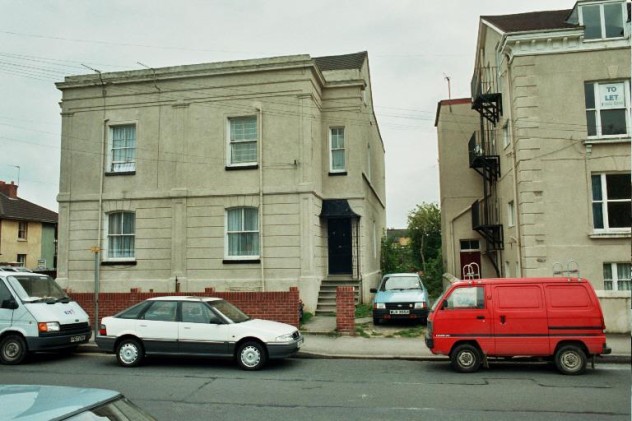
Marriages are often most successful when both partners have similar interests, such as hiking, antiquing, or murdering children. Fred and Rosemary West of Gloucester, England shared such a passion. The horrors that unfolded at their home on 25 Cromwell Street are almost too gruesome to describe.
Fred and Rosemary each had horrible childhoods full of incest and abuse. They met on November 29, 1968, her 15th birthday, when he was 27 years old. On her 16th birthday, they moved in together. Between December 1970 and June 1971, Fred was sent to prison for theft, and Rosemary was forced to care for Fred’s two daughters from his first marriage, Anne Marie and Charmaine. She abused them viciously, finally killing Charmaine in June. When the girl’s mother came to see her children in August, she was also killed. The couple married in 1972, and Fred forced his wife into a life of prostitution. She became pregnant many times, giving birth to a total of seven children.
With their family expanding, the Wests moved to a larger house at 25 Cromwell Street in Gloucester. The couple abused their children sexually, often videotaping the sadistic acts. They murdered at least 12 non–family members, all women, in vicious sex crimes. One victim was Lucy Katherine Partington, the cousin of novelist Martin Amis. In 1987, they murdered their own daughter, Heather Ann, probably because the 17-year-old threatened to expose them. Thereafter, Fred disciplined his children by telling them that if they didn’t behave, they would “end up under the patio like Heather.”
In 1992, one of Fred’s daughters admitted to a friend that her father had raped her. The police investigated, and upon hearing about Heather’s disappearance, they obtained a search warrant. They found three bodies in the backyard, including Heather, and another nine in the cellar. Fred tried to take sole responsibility for the murders to protect Rosemary, but both were convicted. Fred hanged himself in his cell, and Rosemary was sentenced to life in prison.
Like many such notorious estates, 25 Cromwell Street was razed to the ground. In October 1996, it was destroyed in such a fashion that not a scrap remained for souvenir hunters. Today, the site is a landscaped footpath that connects Cromwell Avenue with St. Michael’s Square.
Murder mysteries don’t get much better than this! Buy The House of Three Murders at Amazon.com!
9Dorothea Puente’s Boardinghouse
1426 F Street, Sacramento, California
Running a boardinghouse for the elderly and indigent is not the kind of job one takes to get rich. It’s a labor of love and social responsibility. However, Dorothea Puente of Sacramento found a way to make it a source of murderous profit. Dorothea lived a life of petty crime for years, managing brothels and forging checks. She soon found that seducing older men and then stealing their benefits was a profitable enterprise.
Eventually, she began running a boarding house, taking in elderly tenants. She subjected them to various abuses, drugging and stealing from them. In April 1982, her 61-year-old friend and business partner, Ruth Monroe, died of an overdose after Dorothea drugged her. Dorothea told the police that Monroe had been depressed since recently losing her husband, and they believed that she had committed suicide. She attempted a similar stunt with another resident of the home just a few weeks later, but he survived to report Dorothea to the police. She was sentenced to five years in prison for theft. While incarcerated, she became pen pals with a retiree from Oregon named Everson Gillmouth. They became close, and when she was released from jail, he was waiting for her in his pickup truck. They moved in together at the boarding house.
Shortly thereafter, she hired a handyman to do some work in the apartment. She asked him to build her a long wooden box, paying him in part with a pickup truck that belonged to her “boyfriend” who had “moved away.” She then paid the handyman to bring the box to a storage facility. On the way, she asked the handyman to pull over and dump the box on a riverbank. When the box was eventually discovered, Gillmouth’s body was found inside, so badly decomposed that he couldn’t be identified for years.
Dorothea continued to operate the boarding house. She intercepted Social Security and benefit checks, giving only a small amount of money to the residents themselves and keeping the rest for their “expenses.” Another handyman was seen around the residence, laying concrete and hauling wheelbarrows full of dirt. However, like many killers, Dorothea Puente simply pushed her luck too far.
When a social worker reported resident Alvaro Montoya missing, police arrived at the house to investigate. Recently disturbed dirt on the property tipped them off to the presence of buried bodies, seven of which were eventually found. The trial was lengthy, and the jury deliberated for longer than a month over the grandmotherly woman’s fate. In the end, she was convicted of three murders and spent the rest of her life in prison, dying in 2011 at the age of 82.
Dorothea Puente’s house has changed hands several times in the aftermath. In 2013, it became a stop on the Sacramento Old City Association’s home tour, during which a group that included John Cabrera, the lead homicide detective on the case, got to visit the house. Cabrera commented on the house’s renovation, “I love this house. It’s happy. This veil of darkness has been lifted.”
8John Christie’s House
10 Rillington Place, Notting Hill, London, England
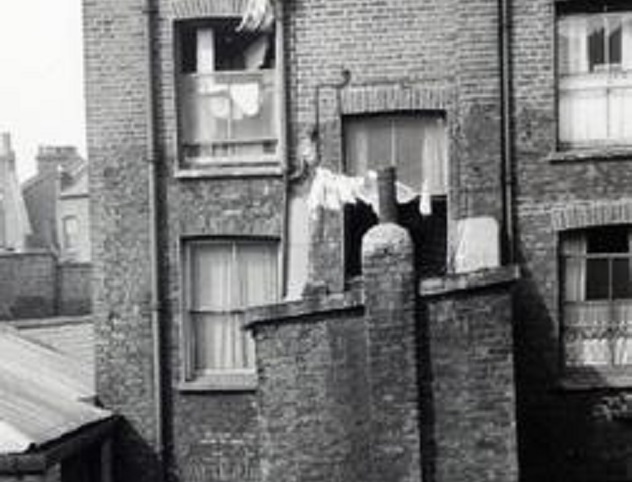
The story of John Christie comes with a bonus—a gross miscarriage of justice. Christie was an Englishman born in 1899. He displayed various hallmarks of mental illness throughout his life, including petty crime, feigning illness for attention, and seeking the company of prostitutes, with whom he was reportedly impotent.
Christie and his wife, Ethel, moved into a flat at the three-story 10 Rillington Place in December 1938. The building was a crumbling brick dump, with only one bathroom to serve all its residents. In 1943, Christie embarked on a campaign of murder there. His first victim was a prostitute named Ruth Fuerst, whom he strangled to death during sex. In his blundering inexperience, he first stashed her body under the floorboards of his living room. Presumably, the body began to stink, so he decided to bury it in the backyard.
His next victim was a co-worker named Muriel Eady. She was suffering from bronchitis, and Christie somehow convinced her that he had a homemade remedy for her problem at his apartment. This “remedy” was a noxious gas, whose smell he masked with ointment. When the woman fell unconscious, he raped and strangled her. He buried her in the garden next to Fuerst.
It was Christie’s next victims who would eventually send a shock wave throughout the UK. In 1949, he murdered his neighbor, Beryl Evans, and her infant daughter, Geraldine, and hid their bodies in the wash house. Police accused Beryl’s husband, Timothy, of the crime. Timothy—who was illiterate and likely mentally challenged—initially accused Christie of the murders, but police put intense pressure on him and eventually coerced him to confess. An investigation at the property turned up other human bones, which were inexplicably ignored. Timothy Evans was convicted of murder and hanged on March 9, 1950. Upon his own capture, Christie admitted to killing Beryl. Timothy has since been posthumously pardoned, and his case was a major reason that the death penalty was abolished in England.
Christie’s next victim would be his own wife, whom he strangled in December 1952. Between January and March 1953, he claimed three more women, following his familiar pattern of gassing, rape, and strangulation. He sealed their bodies in a kitchen alcove, wallpapering over the sections. A few weeks later, he sublet the apartment and moved out. When the landlord arrived, he found the new residents and evicted them, after which he allowed the resident of the upstairs apartment to use Christie’s kitchen. This unfortunate man, Beresford Brown, stumbled upon the corpses a few days later.
A citywide manhunt for Christie began immediately, and he was caught on March 31, 1953. He confessed to a total of seven murders, denying that he killed baby Geraldine. He tried to plead insanity but was sentenced to death. Oddly enough, the executioner, Albert Pierrepoint, was the same man who hanged Timothy Evans. After Christie’s arms were tied in preparation for hanging, he complained to Pierrepoint that his nose itched, to which the hangman responded, “It won’t bother you for long.”
10 Rillington Place was subsequently renamed Ruston Close, and people continued to live there. They refused to move out in 1970 when a film crew asked to shoot a movie at the property, but shortly thereafter, the entire street was demolished.
7Gertrude Baniszwewski’s House
3850 East New York Street, Indianapolis, Indiana
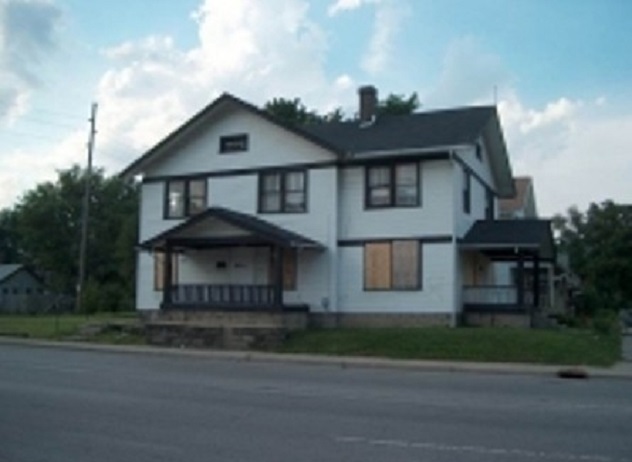
Any social worker can attest that child abuse is disgustingly common throughout society, but the fate of 16-year-old Sylvia Likens continues to inspire shock nearly 50 years after her death. Sylvia was the daughter of itinerant carnival workers, sandwiched between sets of older and younger twins. Sylvia and her siblings were often left with relatives or boarded to allow their parents to travel.
In 1965, Sylvia’s parents separated, and her mother, Betty, was jailed for shoplifting shortly thereafter. Sylvia’s father, Lester, sent Sylvia and her sister, Jenny, to live with the mother of one of their friends, Paula Baniszwewski, promising to pay $20 a week for their care. Lester’s first payment was late, and the mother, Gertrude, swiftly turned on the girls. While Jenny saw her share of misery, Gertrude was particularly hard on Sylvia. Skeletal and asthmatic, Gertrude lacked the strength to torture Sylvia as savagely as she wanted to, so she recruited both her own children and those around the neighborhood to subject her to horrible abuses over a period of months. One boy, Coy Hubbard, used her body to practice judo. The girl was beaten so severely that she became incontinent, to which Gertrude reacted by forcing the girl to eat her own feces.
Jenny Likens attempted to get help for Sylvia by contacting their older sister, Diana. Eventually, a social worker was summoned to the house, but Gertrude managed to convince the worker that Sylvia had run away. Things came to an ugly head in October 1965, when Gertrude and a neighbor boy named Ricky Hobbs took turns beating Sylvia and carving the words “I am a prostitute and proud of it” into the flesh of her abdomen. Afterward, fearing what would happen if her crimes were discovered, Gertrude forced Sylvia to write a runaway letter to her parents. When Sylvia attempted to escape, she was thrown into the basement, where she was beaten to unconsciousness with a broomstick.
Two days later, she was given a bath by Hobbs and Gertrude’s daughter, Stephanie. When she was removed from the water and placed on a bed, they realized she had stopped breathing. When police were summoned to the house, they encountered a corpse that had seen unimaginable torment. Her body was riddled with bruises and burns, and in her final moments, she’d nearly severed her lips with her teeth. Gertrude was sentenced to life in prison, while the children received lesser sentences.
Bizarrely enough, Gertrude was a model prisoner, and despite protests from Jenny Likens and countless others, she was released from prison after serving just 14 years. She died of lung cancer in 1990. Her daughter, Paula, briefly made headlines in 2012, when she was found working as a teacher’s aide in Iowa under an assumed name. When her identity was revealed, she was fired.
Gertrude’s house stood for over 40 years, inspiring neighborhood rumors that it was haunted. It was demolished in April 2009, and the property now serves as a parking lot for a church across the street.
6Ed Gein’s House
Corner Of Archer And Second Avenues, Plainfield, Wisconsin
Any horror fan will recognize the name Ed Gein, who inspired a litany of fictional killers, including fictional ones like Norman Bates and Leatherface. Like many demented folks, Gein had a strange childhood, with an alcoholic father and a religious zealot mother. Ed and his brother, Henry, were kept quite socially isolated, and Ed became hopelessly devoted to his mother. His father died in 1940, and Henry began dating a divorced local woman the following year. He was found dead under mysterious circumstances soon after, likely Ed’s first victim. Ed’s mother then suffered a stroke, and he was forced to wait on her hand and foot, deepening the psychosis of their relationship. She died in 1945, freeing Ed to practice his grim obsessions.
He began reading the obituaries so he could raid graveyards for the freshest bodies, acquiring a collection of female human remains that he turned into various items of clothing, including masks, leggings, a corset, and a belt made of human nipples. In 1954, he killed tavern keeper Mary Hogan. He got away with it for a few years, but when local hardware store owner Bernice Worden went missing, he was quickly linked to her as the store’s last customer. A police investigation of Gein’s property revealed a slaughterhouse. Bernice, who was the mother of a Plainfield deputy, dangled from the ceiling, having been skinned like a deer. Ed had partitioned off the sections of the house his mother used, leaving them as a pristine shrine. His crammed portion of the house was strewn with filth and stinking graveyard relics.
Ed was convicted of first-degree murder, but having been found insane, he spent the rest of his years in a mental hospital. The house itself was to be put up for auction on March 30, 1958, and rumors swirled that it would be used as a tourist destination. Three days before the auction, the house burned to the ground, likely the result of arson. Today, it is a wooded area, the trees plastered with “No Trespassing” signs.
Get inside the heads of history’s most depraved humans with Serial Killers: The Method and Madness of Monsters at Amazon.com!
5Gary Heidnik’s House
3520 North Marshall Street, Philadelphia, Pennsylvania
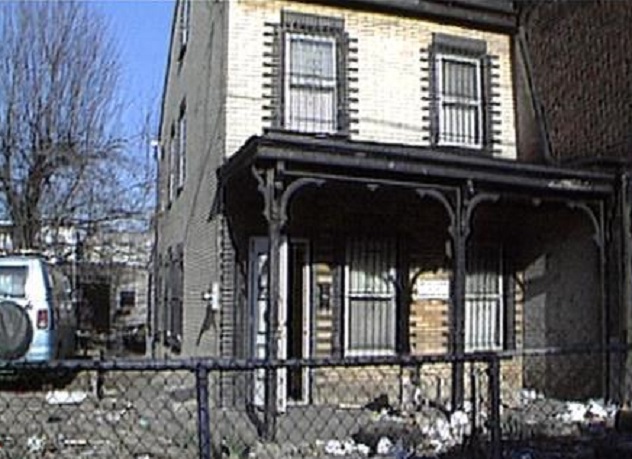
Our image of serial killers is often informed by genius, ultra-cunning figures like Hannibal Lecter. The reality is typically more pedestrian—your average serial killer tends to be of normal to subnormal intelligence. There are, however, exceptions to this rule, including Gary Heidnik, whose IQ was tested at 148, squarely in the gifted range. Despite his apparent smarts, Heidnik dropped out of school and served in the Army. When he was struck ill with gastroenteritis, doctors soon noticed signs of mental illness. Shortly thereafter, he was diagnosed with schizoid personality disorder and honorably discharged. Heidnik spent years drifting in and out of mental institutions for a variety of transgressions but was clever enough to incorporate his own church, the United Church of the Ministers of God, which made him a wealthy man.
In 1986, he made the leap from garden variety rape and assault to full-blown kidnapping and torture, taking his first victim, Josefina Rivera, hostage in his basement at 3520 North Marshall Street, Philadelphia, Pennsylvania. Within three months, he and an accomplice, Cyril “Tony” Brown (who was mildly mentally challenged and likely at Heidnik’s mercy), had amassed a harem of five women in the basement, all of whom were young African Americans. Shortly after her capture, 24-year-old Sandra Lindsay succumbed to the torment. Heidnik dismembered her corpse, labeling her arms and legs as “dog food” and freezing them. He cooked her ribs in the oven and boiled her head on the top of the stove. The reek of smoldering human flesh had the police knocking on the front door of 3520 N. Marshall, but Heidnik convinced them the smell was from a roast that he had burned. He may have eaten some of Lindsay’s flesh or fed it to his other slaves. Another woman, Deborah Dudley, was killed when the chains that bound her were charged with electricity.
In March 1987, Heidnik abducted the woman who would be his last victim, Agnes Adams. Somehow, Josefina Rivera, the first captive, managed to convince Heidnik to let Adams go. She ran for help, and the three living women in the house were rescued. Heidnik pleaded insanity but was rebuffed. On July 6, 1999, he was executed by lethal injection. Gary Heidnik’s house still stands, a narrow and decrepit beige stucco structure in north Philadelphia a few blocks away from the apartment where Rocky Balboa lived in the original Rocky film. These days, it sports a satellite dish.
4The Clutter House
Oak Street, Holcomb, Kansas
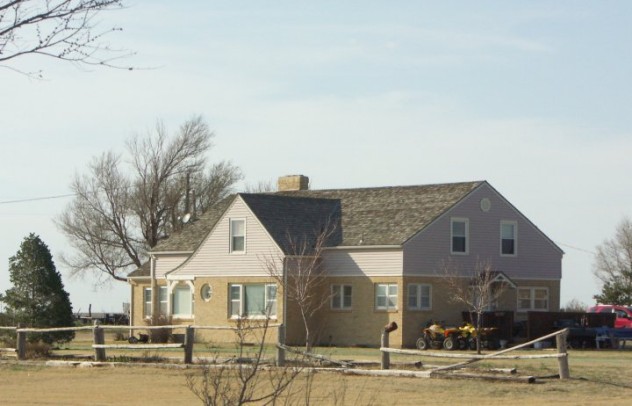
Richard Hickock and Perry Smith were small-time career criminals who had served time at Kansas State Penitentiary. While incarcerated, a fellow inmate named Floyd Wells informed Hickock of a farm where he had once worked whose owner, Herb Clutter, allegedly kept a safe stacked with cash. The men arranged to attack the farmhouse upon their release. On November 14, 1959, they cut the phone lines to the house and tied up the family—Herb, his wife, and their children, 16-year-old Nancy and 15-year-old Kenyon.
When it was revealed that there was no great fortune to be had, an enraged Smith slit Herb Clutter’s throat. The rest of the family was dispatched with shotgun blasts to the head. Hickock and Smith made a clean getaway, but after Wells heard about the murders, he promptly snitched. The pair was arrested on December 30 in Las Vegas. Both tried to plead insanity but were convicted of murder and sentenced to death. They were hanged on April 14, 1965.
Hardly the most sensational case on this list, the Clutter murders would have likely sunk into obscurity if not for novelist Truman Capote, who investigated the incident and wrote about it in the true crime classic In Cold Blood, in which he took significant liberties with the facts. The Clutter house still stands, a nondescript two-story brick structure surrounded by seven acres of flat Kansas land. It was built by Herb Clutter in 1948 for $40,000. A 1967 film adaptation of In Cold Blood was filmed at the house, and tours were given to the curious for a brief time. It is now privately owned and no longer open to the public.
3Jeffrey Dahmer’s Childhood Home
4480 West Bath Road, Bath Township, Ohio
The apartment of cannibal Jeffrey Dahmer made the top spot on a previous list, but if one killer bears repeating so soon, it’s him. In fact, Dahmer’s childhood home has suddenly acquired a whole new notoriety. In one of their bizarre publicity stunts, animal activists from PETA considered buying the property and turning it into a vegan restaurant, which they intended to call “Eat For Life: Home Cooking.” Despite insisting that their bid was serious, PETA has since changed their minds about the plan.
The house, which was put on the market for $329,000 in 2012, was the site of Dahmer’s first murder. In 1978, he killed 18-year-old hitchhiker Steven Hicks. After burying Hicks in the backyard, he exhumed the body, dissolved the flesh in acid, crushed the bones with a sledgehammer, and then scattered the remains.
2The Pickton Farm
953 Dominion Avenue, Port Coquitlam, British Columbia, Canada

The humble pig is a far more intelligent than most people give it credit for, but if there is one part of its reputation this animal deserves, it is its appetite. As unrepentant omnivores, pigs will devour anything in their path. Terry Garner learned this the hard way, when the 70-year-old Oregon farmer was eaten by his pigs, a rare but not unheard-of occurrence. In fact, serial killer Robert Pickton used the voracious nature of his hogs to hide the evidence of his crimes, feeding the remains of mutilated prostitutes to the animals. By the late 1990s, the disappearance of dozens of women and tips regarding Pickton’s property began to mount, and in February 2002, police finally raided the farm.
What they found there was worse than anything anyone could have anticipated. There were body parts in freezers, bits of bone and flesh scattered throughout the property, and teeth that had passed undigested through the pigs’ stomachs. Police also found the tattered clothes and ID cards of the missing women. How many victims Robert Pickton claimed during his murderous career is unknown, but he told an officer posing as a cellmate that he had killed 49 women, and his own carelessness led him to fall shy of his goal of 50. A massive excavation effort costing approximately $70 million took place in an attempt to determine just how many people lost their lives on the farm. It was alleged in the investigation that he may have sold human meat to the public mixed in with pork. Pickton was convicted of six counts of second-degree murder and will likely spend the rest of his life in prison.
Should you choose to visit this awful place, you will find it is not located in the middle of nowhere—it’s actually sandwiched between a suburban neighborhood and a golf course. Across the street stands a massive Costco store. The rambling structures on the farm were all demolished, and today the property is fenced off, owned by the government of British Columbia under lien to pay for Pickton’s $10 million in court costs.
1The Lizzie Borden House
92 Second Street, Fall River, Massachusetts
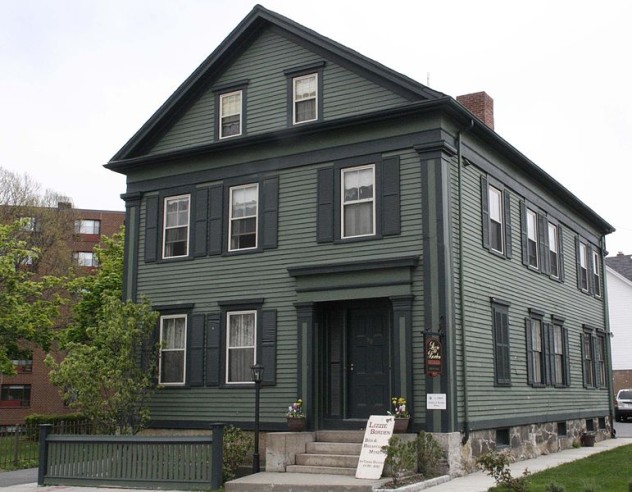
Your average bed and breakfast is the very picture of serenity—historical, typically family-run establishments where floral print wallpaper can be seen in abundance. Their usual draw is proximity to tourist destinations like beaches. But for those of a decidedly more macabre bent, a stay can be had in the former Borden home, where Lizzie Borden allegedly murdered her father and stepmother in cold blood.
Andrew Borden was a wealthy businessman known for pinching pennies. For example, the family home had no indoor plumbing, although he could have well afforded it. However, he was known to be extremely generous with the family of his wife, leading to tensions between him and his daughters, Lizzie and Emma.
The folk rhyme has it that the Bordens were taken out with an axe, but the murder weapon was actually a hatchet. Mrs. Borden caught one blow across her head, and when she fell, her killer sat on her back and struck the back of her skull 19 times. Andrew was likely taking a nap on a couch downstairs when he was struck 10 or 11 times, one blow splitting his eyeball in half. Lizzie was the one to “discover” his body, calling out for a maid on the third floor.
Despite her bizarre, contradictory statements, Lizzie was acquitted of the crime. She and her sister used their considerable inheritance to move into a new house in the fashionable neighborhood of Fall River. Despite being largely ostracized, she remained there until her death in 1927.
Today, the house on 92 Second Street operates as the Lizzie Borden Bed & Breakfast Museum. Rooms can be rented for a reasonable rate, and a stay features a tour of the property and its lurid history. Many claim that the house is haunted, and ghost cams are set up throughout the mansion with the hope of recording some mutilated specter.
Mike Devlin is an aspiring novelist.



